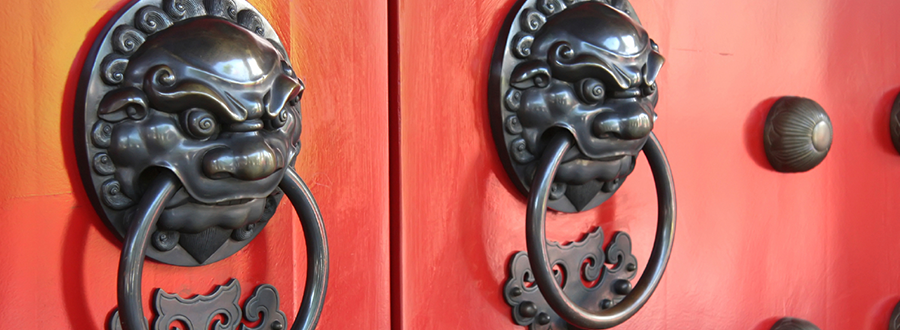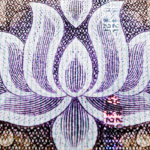Renminbi’s Reserve Currency Status: Symbolic or Opportunity?
The International Monetary Fund's seal of approval could benefit investors in China's interbank bond market

Foreign investors own a mere 1.7% of China's $11 trillion dollar onshore equity and fixed income markets, the third and fifth largest such markets in the world1. Today, international investors are likely to have twice the exposure to Switzerland than China in their portfolios, despite the latter having ten times the GDP2. We believe this is all about to change as foreign holdings of RMB denominated assets may be on the cusp of a significant uptrend spurred on by the International Monetary Fund (IMF) granting the Chinese currency its official seal of approval.
On Monday November 30th, the IMF announced a change to the composition of its Special Drawing Rights (SDR), an elite basket of reserve currencies. Such a change has not occurred since the Euro was included in 19993. SDR currencies are commonly regarded as the most stable and prevalently used currencies in the world. China’s currency, the renminbi (RMB), will now join the ranks of the Dollar, Euro, Pound, and Yen as the third largest SDR currency behind the Dollar and Euro. The inclusion will commence on October 1, 2016.
SDR Composition
| SDR Weights | 2005 | 2010 | 2016 Estimate |
| USD | 44% | 41.9% | 41.73% |
| EUR | 34% | 37.5% | 30.93% |
| GBP | 11% | 11.3% | 8.09% |
| JPY | 11% | 9.4% | 8.33% |
| RMB | – | – | 10.92% |
Data from the IMF as of 11/30/2015
The SDR system is intended to serve as a safety net that could provide stability in the event of a global financial crisis. In practical terms today, the SDR is only deployed to settle disputes between the IMF’s smallest member nations. The total SDR quota the IMF requires central banks to hold is $280 billion4, a fraction of the $12.4 trillion reserve currency assets that central banks hold around the world, according to the World Bank’s 2014 statistics.
While the amount of RMB central banks will be required to hold as a part of the SDR system is proportionately low, having the RMB join the SDR will promote far greater discretionary stock-piling of RMB by central banks as a part of the bigger $12.4 trillion dollar pie. In order to have its currency included into the SDR, the People’s Bank of China (PBoC) has undergone sweeping measures to ensure the RMB meets the IMF’s criteria and is freely accessible to all IMF member nations. We believe the RMB’s inclusion into the SDR is a giant leap forward for China’s goal of increasing foreign participation in its capital markets.
When foreign central banks seek to gain exposure to the RMB to meet their reserve requirements, they will most likely do so through short term paper traded on China’s interbank bond market, the third largest bond market in the world with a market size of $7.3 trillion5. Short term sovereign bonds in the United States, Europe and Japan yield less than 0.5% while the equivalent rate in the onshore China bond market offers a compelling 2.5% yield6.
Estimates for the potential inflows that RMB inclusion might trigger range from the hundreds of billions to two trillion dollars, which would be reallocated over the coming years into this untapped new asset class7. Central banks will be the first to gain exposure due to SDR requirements, and will subsequently be followed by international asset managers and individual asset owners.
For investors wishing to gain exposure to China’s interbank bond market ahead of the forthcoming global reallocation, KraneShares has a China commercial paper ETF listed on the New York Stock Exchange. The KraneShares E Fund China Commercial Paper ETF (ticker : KCNY) provides direct RMB exposure and holds investment grade commercial paper8 with an average maturity of less than six months. KCNY provides investors with a vehicle to potentially benefit the RMB’s inclusion into the SDR and the corresponding global reallocation to the RMB that the inclusion will trigger.
- TOM ORLIK AND FIELDING CHEN, (Nov 10 2015) “China’s 13th Five Year Plan – The Report”, Bloomberg Intelligence
- Data from the World Bank as of 12/31/2014
- International Monetary Fund,(Oct 12 2000) "IMF Completes Review of SDR Valuation", Press Release No. 00/55
- Neelabh Chaturvedi, (Nov 29 2015) "IMF expected to include yuan in SDR currency basket", CNBC
- Data from Wind as of 11/30/2015
- Data from Bloomberg as of 12/02/2015
- Nyshka Chandran, (Nov 30 2015) "SDR inclusion to help China lure trillion-dollar inflows", CNBC
- For purposes of the Underlying Index, investment grade commercial paper is commercial paper that is issued by an issuer whose long-term bonds are rated AAA or equivalent by one or more Chinese credit rating agencies; or commercial paper that is issued by an issuer whose long-term bonds are rated AA+ or equivalent by one or more Chinese credit rating agencies and commercial paper is rated A-1 or equivalent by one or more Chinese credit rating agencies


















